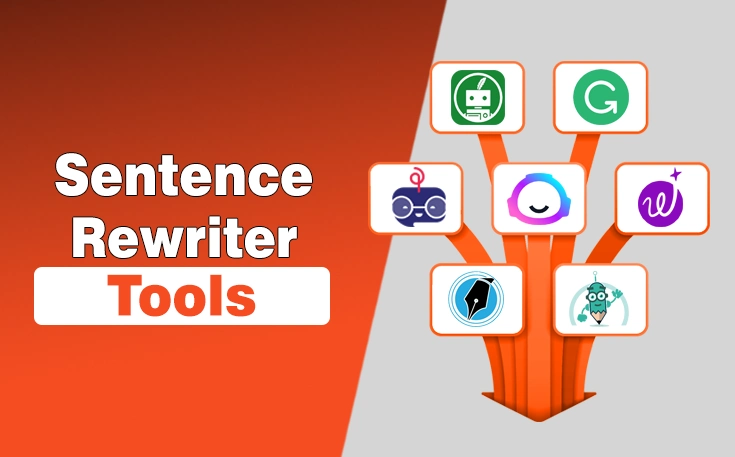If you love Poshmark for its fashion-resale vibes but wish for lower fees, more niche communities, or simpler shipping, you are in a good company. In 2025, many apps like Poshmark have evolved to resonate with the preferences of sellers who want what Poshmark offers, but better in specific areas.
Some focus on vintage streetwear, others on designer labels, sustainable fashion, or hands-off consignment. In this blog post, I will take you through 10 Poshmark alternatives that feel like Poshmark but bring something fresh to the table. If you are ready to expand your reach or try alternatives, this guide is for you.
<strong>What is Poshmark?</strong>
Poshmark is a social e-commerce platform founded in 2011 that allows users to buy and sell new or secondhand clothing, shoes, and accessories.
It combines the ease of online shopping with the engagement of a social network, letting users follow sellers, share listings, and host live sales. Sellers can list items directly from their phones, handle shipping through prepaid labels, and earn money from their closets.
As of 2025, Poshmark operates in multiple countries and has over 100 million users, which makes it one of the leading fashion resale platforms globally for both casual and professional sellers.
<strong>What Makes a Great Poshmark Alternative?</strong>
To consider an app “like Poshmark,” I evaluated them using these criteria:
- Fashion-resale focus (clothes, accessories, designer, vintage)
- Competitive fees for sellers and transparency in commission
- Strong visual / community features (sharing, feeds, likes)
- Ease of shipping & seller tools
- Trust, buyer protection, and platform stability
<strong>Top 10 Best Apps Like Poshmark in 2025</strong>
List of 10 Best Apps Like Poshmark
- Depop
- Vinted
- Mercari
- ThredUp
- Grailed
- Tradesy
- Curtsy
- Vestiaire Collective
- Facebook Marketplace
- The RealReal
Below, I have provided the details on the top 10 best apps like Poshmark. Each of these apps offers something that can match or surpass parts of the Poshmark experience, whether it’s style, fees, community, or convenience.

1. Depop
Depop remains one of the strongest Poshmark alternatives for those who live for vintage, streetwear, and highly visual style. It has a social feed style interface, which makes browsing feel like scrolling through fashion magazine collages. Many sellers value the community vibe; buyers get a sense of personality when shopping.
In 2025, Depop is especially strong with Gen Z audiences, strong mobile UX, and tools for creators (tagging, live sales, etc.), which help sellers stand out in saturated fashion resale.
Key Features
- Feed-style social shopping (likes, follows, top-lists)
- Low listing/barrier to entry for creators & casual sellers
- Visual product display and strong engagement tools
- Simple mobile app workflow for listing & shipping
- Global reach, but especially strong in fashion-forward urban markets

2. Vinted
Vinted appeals because it offers a cost-friendly way for casual resellers to clear their closets or start small shops. One of its biggest draws: in many regions, sellers pay no selling fees; instead buyers pay a small service fee. The interface is straightforward, focused on clothing, shoes, accessories, and making resale sustainable and simple.
In 2025, Vinted has expanded its presence, improved its logistics/shipping options, and gained credibility among users who dislike high fees and complicated listing processes.
Key Features
- Zero or very low seller fees in many markets
- Clean, intuitive interface geared toward fashion resale
- Integrated shipping workflows and prepaid labels
- Strong community features (reviews, seller ratings)
- Wide inventory of clothes, shoes, accessories, often preloved

3. Mercari
Mercari is broader than just fashion, which can be good if you sell a mix of items. What’s nice is its simplicity: easy photo uploads, fair fees (often lower than Poshmark), and a variety of categories from fashion to electronics. Sellers appreciate the flexibility, plus tools like promotions or “offers” help move slower listings.
Recently, Mercari has improved buyer protection and streamlined shipping and make it a safe option for people expanding beyond just clothes, similar to AliExpress.
Key Features
- Wide category range (fashion + non-fashion goods)
- Straightforward fee structure
- Mobile-friendly listing tools
- Option to ship or use drop-off/shipping labels
- Buyer/seller protection and community feedback

4. ThredUp
ThredUp offers a more hands-off experience: you send in your items via its “Clean Out” kit, and they do the rest. That means photographing, pricing, listing, and even handling returns or unsold items. The tradeoff is you have less control, and payouts may be lower, but the convenience is high.
For sellers who don’t want to manage every step (photos, shipping, listing), ThredUp shines. In 2025, its brand is strong with buyers who trust its quality and standards.
Key Features
- Managed consignment model (they handle listing & photography)
- Clean Out kits and prepaid shipping for ease
- Accepts many popular brands & higher-end clothing
- Strong quality control & curation
- Sustainable resale focus and eco-friendly messaging

5. Grailed
Grailed stands out if you have luxury or coveted streetwear brands. Authenticity and curation are big here, items are often reviewed or curated, which helps maintain trust among buyers. Grailed also tends to command higher sale prices for rare or premium pieces compared to more general resale apps.
If your inventory skews toward designer, limited edition, or niche streetwear, Grailed gives you access to a buyer community willing to pay for exclusivity.
Key Features
- Focus on high-end, designer, streetwear fashion
- Authentication or verification of premium items
- Strong trust and niche audience for rare goods
- Detailed listing requirements & quality presentation
- Global reach for collectors and hype buyers

6. Tradesy
Tradesy specializes in designer and premium fashion—bags, shoes, accessories, with a focus on luxury resale. They aim to give you a higher end experience: nicely photographed listings, often better packaging, and more curated user base.
Sellers who have nicer inventory can often fetch higher prices here. The tradeoff is higher competition and sometimes stricter acceptance criteria. But for luxury or near-luxury fashion, Tradesy remains a top pick in 2025.
Key Features
- High-end and designer category focus
- Premium customer base willing to pay for quality
- Good presentation tools and seller guidelines
- Secure payment & buyer protection for expensive items
- Flat/transparent commission on higher value items

7. Curtsy
Curtsy is smaller but feels friendly for newbie resellers. It focuses on women’s fashion, offering lower fees, good shipping integration, and simpler listing. Many users like Curtsy because it is less intimidating than larger platforms.
Besides, Curtsy has improved its UX, lowered some barriers, and is especially competitive if you want to offload everyday fashion items without heavy investment.
Key Features
- Beginner-friendly design and listing steps
- Lower commissions and simple fee structure
- Good shipping tools and connection with users locally
- Focus on women’s fashion & trendy affordable brands
- Active community with buyer & seller feedback

8. Vestiaire Collective
Vestiaire Collective is for sellers of luxury, designer fashion, vintage premium items. It emphasizes authentication, curated listings, and an upscale experience. Buyers pay for verified authenticity and are willing to pay premium prices for items with solid provenance.
If you have designer pieces, rare vintage, or luxury accessories, Vestiaire can help you reach buyers who value authenticity and quality.
Key Features
- Authentication services for designer/vintage items
- Curated listings with quality checks
- International buyer base interested in luxury fashion
- Better packaging and presentation standards
- Moderated marketplace with seller standards

9. Facebook Marketplace
Facebook Marketplace is less curated but very powerful for local resale. If you’re selling closer to where you live, it’s fast, easy, and has almost no fees (especially for local pickup). In 2025, Facebook is used by many resellers to move items quickly, offload bulky goods, or test designs without shipping worries.
However, It lacks some of the fashion-community flare of Poshmark or Depop, but it wins on reach and convenience.
Key Features
- Huge built-in audience via Facebook users
- Very low or no listing fees in many cases
- Local pickup option to avoid shipping hassles
- Simple listing process from mobile
- Flexibility to sell non-fashion or bulky items easily

10. The RealReal
The RealReal focuses exclusively on authenticated luxury resale, designer fashion, and high-end accessories. They provide professional authentication, quality checks, and sell to a customer base looking for authenticity and premium brands.
Further, if your inventory is high value and you want a platform that assures buyers of legitimacy, The RealReal is strong. It typically takes a larger commission, but the potential sale price tends to be higher.
Key Features
- Strict authentication of luxury/designer goods
- High quality presentation and listing support
- Buyer trust for premium fashion items
- Global shipping and logistics for high-end items
- Higher average sale prices, justified by quality and trust

<strong>Final Thoughts </strong>
These are the details about the top 10 best apps like Poshmark in 2025.
As the resale market continues to expand, finding the right platform can make or break your selling experience. While Poshmark remains a trusted option, 2025 has brought forward a wave of alternatives that offer better fees, broader audiences, and smoother selling tools. Whether you are into luxury fashion, vintage streetwear, or casual closet cleanouts, each of these apps has something unique to offer.
The best approach is to experiment with a few platforms, learn where your items sell best, and build your niche presence as the fashion resale world grows faster than ever.
Need custom app with amazing features?
Get a Quote




